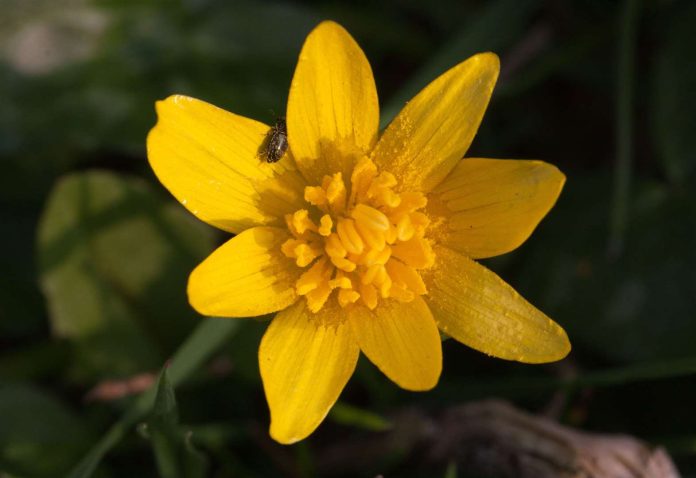While frosty mornings are still very much on the menu and heavy showers a seasonal staple, the noticeably longer days we enjoy through March and April give the welcome sun a greater chance to work its magic over the waking landscape.
The effect of the sun’s rays is particularly apparent in our ancient woodlands. Here, its rays bathe the ground in warming light, the impact accentuated thanks to the shelter provided by the trees.
Woodland wildflowers. Credit: Nottinghamshire Wildlife Trust
This effect is most noticeable in those few glorious weeks before the buds on the bare branches unfurl to create the dense canopy that will shade the woodland floor through much of the summer and well into autumn.
Having lain dormant and, to all intents and purposes, lifeless for months, the ground quickly transforms from a blank canvas into a natural work of art with a succession of woodland wildflowers all too briefly taking their turn in the spotlight.
Woodland wildflowers. Credit: Nottinghamshire Wildlife Trust
This natural art installation often starts slowly with the arrival of delicate snowdrops as early as the turn of the year but builds as daffodils, primroses, celandines and dog violets add a real dash of colour.
As I highlighted a couple of weeks ago, the star of the season for me are displays of wood anemone.
Not only are they an indication that spring is on its way, when found growing in the company of species such as dog’s mercury and yellow archangel, they can also be an indicator of an ancient woodland and where found growing in hedge bottoms or along shaded banks , they can be a clue to woodlands lost.
Woodland wildflowers. Credit: Nottinghamshire Wildlife Trust
Long after the early snowdrops have disappeared and the first flushes of primrose and anemone are fading, the lush leaves of the iconic bluebell are already in evidence.
Using energy harvested from the sun and stored in bulbs below the ground, they push through the surface as if making an early promise of life and vibrancy to come. The arching stems and vibrant blue blooms of the bluebell extend the wonderful woodland wildflower spectacle through April into May — providing color until the wider landscape, outside the shelter of the ancient bows has had time to warm.
Woodland wildflowers. Credit: Nottinghamshire Wildlife Trust
These most beloved of blooms are a species always likely to feature high in any poll of Britain’s favorite native flowers; and with 50% of the world population growing here, it’s no wonder they have a place in our hearts. Swathes of bluebells in UK woodlands are a natural wonder we mustn’t take for granted.
While found across Western Europe our shores are such a stronghold for the species that any serious decline here could undermine the species’ long term survival. Earlier this month we launched our Protect our Ancient Woodlands appeal to raise funds to help us care for, restore and reconnect ancient woodlands across the county.
We’ve had lots of generous donations meaning we’re over half way to our £25,000 target and every pound will help ensure we can do more to safeguard these vital places for wildlife and people — so please consider supporting us if you’ve not already done like that.
Woodland wildflowers. Credit: Nottinghamshire Wildlife Trust
Nottinghamshire Wildlife Trust.
To find out more visit nottinghamshirewildlife.org/ancientwoodland
Erin McDaid
– Nottinghamshire Wildlife Trust

